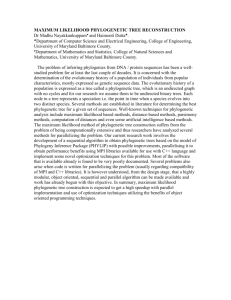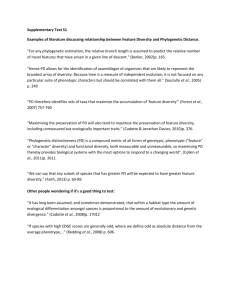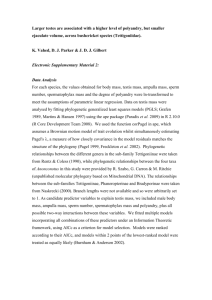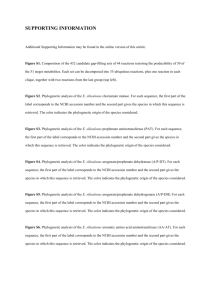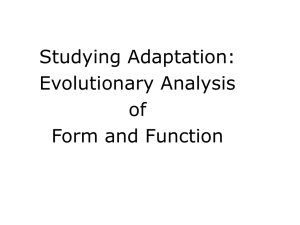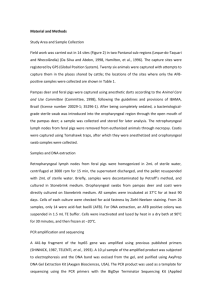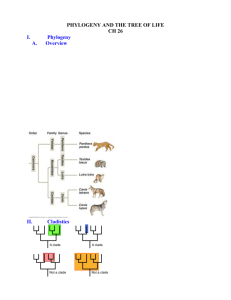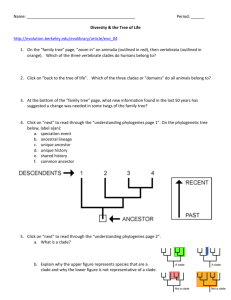Losos (2008) Phylogenetic niche conservatism, phylogenetic signal
advertisement
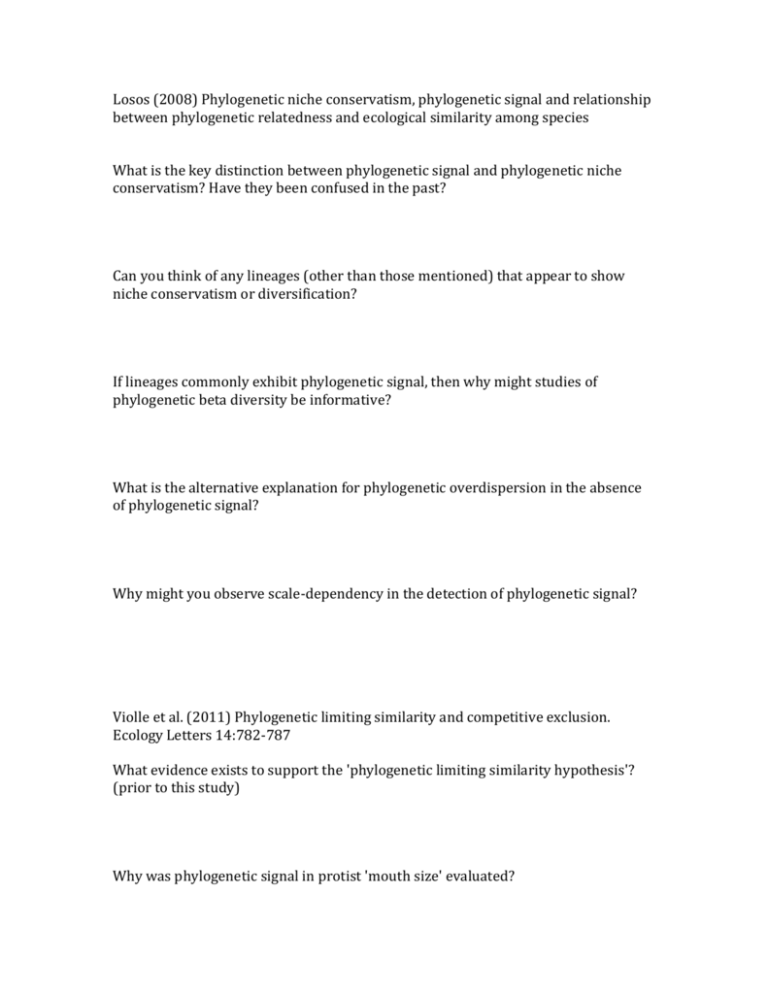
Losos (2008) Phylogenetic niche conservatism, phylogenetic signal and relationship between phylogenetic relatedness and ecological similarity among species What is the key distinction between phylogenetic signal and phylogenetic niche conservatism? Have they been confused in the past? Can you think of any lineages (other than those mentioned) that appear to show niche conservatism or diversification? If lineages commonly exhibit phylogenetic signal, then why might studies of phylogenetic beta diversity be informative? What is the alternative explanation for phylogenetic overdispersion in the absence of phylogenetic signal? Why might you observe scale-dependency in the detection of phylogenetic signal? Violle et al. (2011) Phylogenetic limiting similarity and competitive exclusion. Ecology Letters 14:782-787 What evidence exists to support the 'phylogenetic limiting similarity hypothesis'? (prior to this study) Why was phylogenetic signal in protist 'mouth size' evaluated? Violle et al. highlight an alternative where competition could eliminate species that do not necessarily have the greatest niche overlap. This hinges on distinguishing niche differences from differences in competitive ability. How do you think these concepts differ? Do you think conditions in this experiment predict the outcome of protist competition 'in the real world'?

